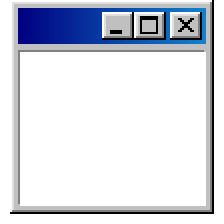Steamをインストール
ログイン
|
言語
简体中文(簡体字中国語)
繁體中文(繁体字中国語)
한국어 (韓国語)
ไทย (タイ語)
български (ブルガリア語)
Čeština(チェコ語)
Dansk (デンマーク語)
Deutsch (ドイツ語)
English (英語)
Español - España (スペイン語 - スペイン)
Español - Latinoamérica (スペイン語 - ラテンアメリカ)
Ελληνικά (ギリシャ語)
Français (フランス語)
Italiano (イタリア語)
Bahasa Indonesia(インドネシア語)
Magyar(ハンガリー語)
Nederlands (オランダ語)
Norsk (ノルウェー語)
Polski (ポーランド語)
Português(ポルトガル語-ポルトガル)
Português - Brasil (ポルトガル語 - ブラジル)
Română(ルーマニア語)
Русский (ロシア語)
Suomi (フィンランド語)
Svenska (スウェーデン語)
Türkçe (トルコ語)
Tiếng Việt (ベトナム語)
Українська (ウクライナ語)
翻訳の問題を報告



 United States
United States 





















 84人が評価
84人が評価 












🧡 Cool Guy 🧡
⚡⚡ Let’s be friends for future games ⚡⚡
🌟🌟 Have a wonderful year🌟🌟
💫💫 Stay safe & take care💫💫
🔥🔥🔥+REP The profile is fire 🔥🔥🔥
════════════🔱🔱🔱🔱🔱🔱═════════════
🔥🔥🔥 This dude is fire 🔥🔥🔥
❗️💯 Let’s be friends for future games 💯❗️
💎💎 Have a wonderful experience during each match💎💎
⚜️⚜️ Stay safe & take care⚜️⚜️
✅✅✅➕REP➕✅✅✅
🤤🤤🤤The profile is awesome🤤🤤🤤
════════════ 👑👑👑👑👑👑═════════════
🔥🔥🔥+REPPP the profile is fire 🔥🔥🔥
🕹🕹 Let’s be friends for future games 🕹🕹
☘️☘️ Have a nice day☘️☘️
⭐️⭐️⭐️Stay safe & take care⭐️⭐️⭐️
════⛧°⋆𓆝𓆟⋆༺𓆞𓆝 ༻⋆𓆟°⛧.═════
🧡 Cool Guy 🧡
⚡⚡ Let’s be friends for future games ⚡⚡
🌟🌟 Have a wonderful year🌟🌟
💫💫 Stay safe & take care💫💫
🔥🔥🔥+REP The profile is fire 🔥🔥🔥
════════════🔱🔱🔱🔱🔱🔱═════════════
✅ + REP
💌💟 💟💌
💟🌠💝💟💝🌠💟
💌🌠💌🏆💌🌠💌
💟🏆🔝🏆💟
🔝 💌🌠💌 🔝
⚡ 💟 ⚡
💫 💫
✅ Cool guy !!!